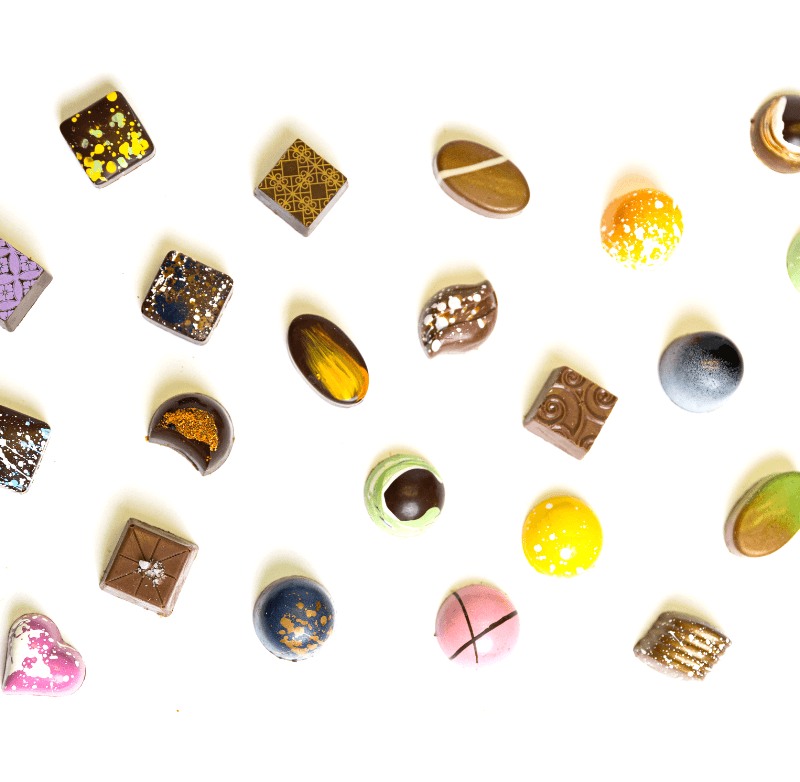The Art of a Cozy Winter Day: Why Does Coffee and Chocolate Pairing Matter?
Winter has a way of slowing us down, inviting us to find comfort in simple pleasures. There's a certain magic in the quiet moments, the gentle snowfall outside, the crackle of a fireplace, and the warmth of a mug held between your hands. For many, this scene is incomplete without two of life's most beloved indulgences: coffee and chocolate. They are more than just beverages and sweets; they are companions that can transform a cold afternoon into a truly memorable sensory experience. But have you ever considered that just like fine wine and cheese, not all coffees and chocolates are created equal when paired together? The right combination doesn't just put two great things side-by-side; it elevates them, creating a harmonious symphony of flavors that is greater than the sum of its parts. This is where the art of pairing comes in, a thoughtful process that can unlock hidden notes and new dimensions in both the coffee and the chocolate.
It's a misconception to think that any coffee will do with any chocolate. A powerful dark roast can easily overpower a delicate milk chocolate, and a fruity Ethiopian coffee might clash with the caramel notes of a certain truffle. The goal is to find synergy, a balance where each element highlights the best qualities of the other. The rich bitterness of cocoa can cut through the acidity of a bright coffee, while the sweetness of a truffle can mellow out a strong brew. This synergy is what makes the pairing so compelling and so satisfying. It’s about creating a moment of pure bliss, a small ritual to savor during the coldest months. By understanding the fundamentals of flavor profiles, you can move from simple consumption to a true connoisseur's appreciation. This guide will help you navigate this delicious world, ensuring that your next cozy moment is a perfectly paired one.
What Makes Coffee and Chocolate So Perfect for Winter?
Coffee and chocolate share a deep, complex history and a common origin, they both come from beans that are roasted to unlock their full potential. This parallel journey from raw ingredient to finished product is part of their inherent compatibility. But beyond their shared lineage, their inherent properties make them ideal for the winter season. The act of sipping a hot beverage like coffee provides immediate physical warmth, a comfort that is instinctively sought out when the temperature drops. The aroma alone, rich with notes of roast, spice, and earth, can fill a room and create an inviting atmosphere. Similarly, chocolate, particularly the dark and intense varieties, is known for its comforting and satisfying qualities. The luxurious texture and complex flavor profiles offer a sense of indulgence and warmth from within.
Moreover, both coffee and chocolate can be seen as "mood boosters." The caffeine in coffee provides a gentle lift, helping to shake off the winter slump, while chocolate contains compounds like theobromine and phenylethylamine that can contribute to a feeling of well-being and pleasure. When combined, these effects are amplified. It's a pairing that not only satisfies the palate but also nourishes the soul. The shared ritual of preparing a good cup of coffee and selecting a fine piece of chocolate, perhaps a dark chocolate truffle from Dallmann Fine Chocolates, is a form of self-care. It's a moment to pause, to be present, and to find joy in the little things. This deliberate act of comfort is a powerful antidote to the cold, dark days of winter.

How Do You Identify the Key Flavor Profiles of Coffee?
Before you can create a perfect pairing, you need to understand what you're working with. Coffee is not just "coffee"; it's a world of diverse flavors and aromas, influenced by its origin, processing, and roast level. Identifying these profiles is the first step to becoming a pairing expert. The most basic classification is by roast: light, medium, and dark. A light roast is bright, acidic, and often has fruity or floral notes. Think of flavors like citrus, berries, or jasmine. These coffees retain more of the original bean's character. A medium roast is more balanced, with a fuller body and less acidity. It often presents notes of nuts, caramel, or chocolate. This is the "sweet spot" for many coffee drinkers, offering a pleasant middle ground. A dark roast is characterized by a bold, smoky flavor. The roasting process brings out notes of dark chocolate, toasted nuts, and often has a slightly bitter finish. The original characteristics of the bean are less prominent here.
Beyond the roast, the origin of the coffee bean plays a crucial role. A coffee from Ethiopia, for example, is known for its bright, fruity, and floral notes. A bean from Colombia often has a well-balanced profile with notes of citrus, nuts, and caramel. Sumatra coffee, on the other hand, is known for its earthy, smoky, and full-bodied characteristics. A coffee's acidity, body (the weight or "thickness" on your tongue), and aroma are all important clues to its flavor profile. Paying attention to these details will allow you to make informed decisions when selecting the perfect chocolate to complement your brew. Take a moment to truly taste your coffee, letting it sit on your palate and identifying the subtle flavors. Is it bright or smooth? Does it have notes of fruit or nut? The answers to these questions are your roadmap to a successful pairing.
Which Coffee Pairs Best with Different Types of Chocolate?
Now for the main event, the pairings themselves. The goal is to either create a complementary match, where similar flavors are enhanced, or a contrasting one, where different flavors balance each other out.
-
Dark Chocolate (70% or higher): The robust, bitter notes of a high-cocoa dark chocolate need a coffee that can stand up to it without being overwhelmed.
-
Best Pairing: A medium to dark roast coffee from Sumatra or Brazil. The earthy, smoky, or nutty notes of these coffees will harmonize with the deep, bitter flavor of the chocolate. The coffee's full body will match the richness of the dark chocolate, creating a powerful and satisfying experience. Avoid light roasts, as their acidity will clash with the bitterness.
-
Milk Chocolate: Sweet and creamy, milk chocolate has a much softer flavor profile. It requires a coffee that won't overpower its delicate sweetness.
-
Best Pairing: A light to medium roast coffee from Colombia or Costa Rica. The balanced, well-rounded flavor of these coffees with notes of caramel, honey, or citrus will complement the milk chocolate's creaminess without being too strong. A lighter roast will allow the chocolate's subtle notes of vanilla and milk to shine through.
-
White Chocolate: This isn't technically "chocolate" as it contains no cocoa solids, but its creamy, sweet, and buttery profile makes it a unique pairing partner.
-
Best Pairing: A light roast coffee from Ethiopia or Kenya. These coffees are known for their bright, fruity, and floral notes (think jasmine, bergamot, or berries). The acidity and fruitiness of the coffee will cut through the richness of the white chocolate, creating a refreshing and surprising contrast.
-
Caramel-filled or Nut-based Chocolates: These chocolates have distinct flavor profiles that need to be considered.
-
Best Pairing: A medium roast coffee from a region like Colombia that has natural notes of nuts or caramel. This creates a complementary pairing where the coffee enhances the nutty or toffee flavors of the chocolate, resulting in a rich, cohesive taste.
By focusing on these general rules, you can start experimenting with your own combinations. A high-quality box of assorted chocolates, such as those from Dallmann Fine Chocolates, provides the perfect opportunity to taste the different pairings and discover your personal favorites.
How Can You Create the Perfect Coffee and Chocolate Pairing at Home?
Creating a perfect pairing isn't just about matching flavors; it's about setting the scene and engaging all your senses. This isn't a race; it's a ritual. Here’s a simple guide to elevate your at-home experience:
-
Select Your Coffee: Choose a high-quality, freshly roasted coffee. Grind the beans just before brewing for the best flavor. A French Press or a pour-over method can help bring out the complex notes of the coffee.
-
Choose Your Chocolate: Select a variety of chocolates to try different pairings. Dallmann Fine Chocolates offers an exquisite selection, from single-origin dark chocolates to intricately flavored truffles. The quality of the chocolate is paramount, as a finer chocolate will have more nuanced flavors to pair with.
-
Prepare Your Palate: Before you begin, have a sip of water to cleanse your palate. This ensures you can taste the true flavors of both the coffee and the chocolate.
-
The Tasting Process: Take a small sip of coffee first, letting it sit on your tongue. Note its acidity, body, and flavor notes. Then, take a small bite of chocolate. Let it melt slowly in your mouth, savoring the texture and flavor. Finally, take another small sip of coffee while the chocolate is still on your tongue. The magic happens in this final moment, as the flavors of both combine and evolve. Does the chocolate's bitterness soften? Does the coffee's sweetness become more pronounced?
Remember to take notes if you like, and don’t be afraid to experiment. The most important rule is to have fun and enjoy the process. A cozy blanket, a favorite book, and a perfectly paired coffee and chocolate from Dallmann Fine Chocolates can turn an ordinary winter afternoon into an extraordinary moment of comfort and bliss.

Conclusion: Your Winter Ritual Awaits
The pairing of coffee and chocolate is a timeless tradition, a testament to the simple power of two great things coming together to create something even better. It is an art form, a science, and a delightful ritual all at once. By taking the time to understand the unique characteristics of both your coffee and your chocolate, you can unlock a world of flavor combinations that will warm you from the inside out. This winter, don't just drink your coffee and eat your chocolate; make it an experience. Whether you're a dark chocolate devotee or a milk chocolate connoisseur, there's a perfect coffee out there waiting to be discovered.
We invite you to explore the exquisite collection of fine chocolates from Dallmann Fine Chocolates. Each piece is crafted with the highest quality ingredients and a passion for flavor, making them the ideal partner for your winter coffee ritual. From our decadent truffles to our rich chocolate bars, you'll find the perfect match for any brew. Treat yourself or a loved one to a gourmet chocolate gift and savor the warmth, comfort, and unparalleled flavor that a perfect pairing brings.
Shop Dallmann Fine Chocolates for your gourmet chocolate gifts today.
FAQs about Coffee and Chocolate Pairings
What is the best chocolate to pair with a dark roast coffee?
The best chocolate to pair with a dark roast coffee is a high-cocoa dark chocolate, typically 70% or higher. The robust, smoky, and often slightly bitter notes of a dark roast coffee, such as a Sumatra or Brazilian blend, are best complemented by a dark chocolate that can match its intensity. This pairing creates a powerful and cohesive flavor experience, where the chocolate’s bitterness is balanced by the coffee’s full body. Avoid pairing a dark roast with milk or white chocolate, as the coffee's strong flavor will completely overwhelm the delicate sweetness of the chocolate.
Can I pair milk chocolate with coffee?
Yes, you can and should pair milk chocolate with coffee, but it requires a careful selection. Milk chocolate is sweet and creamy with a softer flavor profile than dark chocolate. It pairs best with a light to medium roast coffee that is well-balanced and has notes of caramel, nuts, or mild citrus. A coffee from a region like Colombia or Costa Rica is an excellent choice. The coffee's moderate body and nuanced flavor will complement the milk chocolate's creaminess without overpowering it, creating a harmonious and pleasant combination.
Why is it important to cleanse your palate between tastings?
Cleansing your palate between tastings is a crucial step to fully appreciate the unique flavors of both the coffee and the chocolate. When you taste one item, its residual flavor can linger on your tongue and affect your perception of the next item. By taking a sip of water, you rinse away any lingering sweetness, bitterness, or acidity, allowing you to start fresh with a neutral palate. This ensures that you can experience the true, unadulterated flavors of both the coffee and the chocolate and accurately assess how they interact with each other.
How does the origin of the coffee bean affect the pairing?
The origin of the coffee bean has a significant impact on its flavor profile and, therefore, on the pairing. For example, coffees from Ethiopia are known for their bright, fruity, and floral notes, which pair beautifully with the sweetness of white chocolate. In contrast, coffees from Sumatra are known for their earthy and smoky notes, which make them an ideal partner for the intense flavor of dark chocolate. The region where the coffee is grown, along with the processing methods, contributes to a unique set of characteristics that will either complement or contrast with the chocolate you choose, creating a specific sensory experience.
What are some common mistakes to avoid when pairing?
One of the most common mistakes is pairing a very strong coffee with a very delicate chocolate, which results in the chocolate's flavor being lost. For example, pairing a dark roast with a white chocolate will not allow you to taste the nuances of the white chocolate. Another mistake is rushing the process. A perfect pairing is a sensory experience, and it should be savored slowly. Taking a small bite of chocolate and a sip of coffee together is the best way to experience the flavor combination. Lastly, using low-quality ingredients will not yield the best results. The quality of both the coffee and the chocolate is paramount to a successful and enjoyable pairing.













